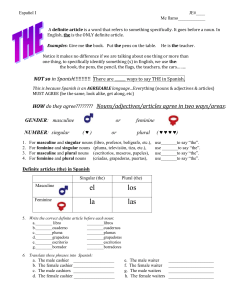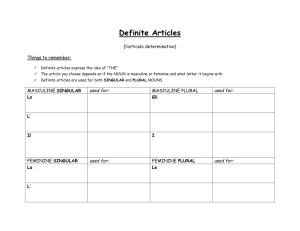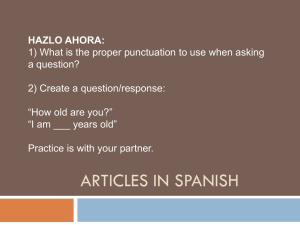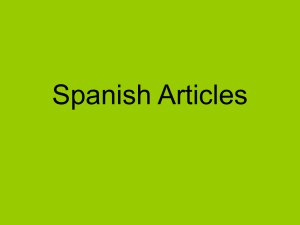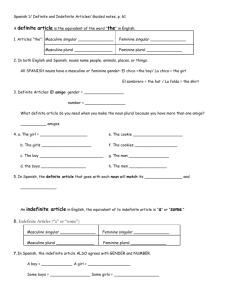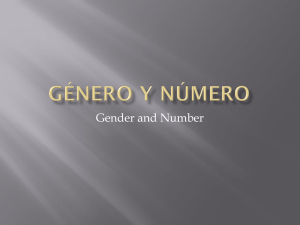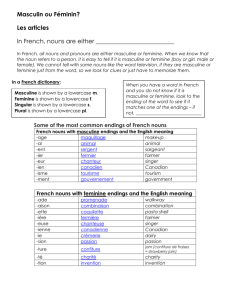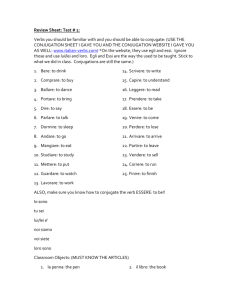Definite Articles
advertisement
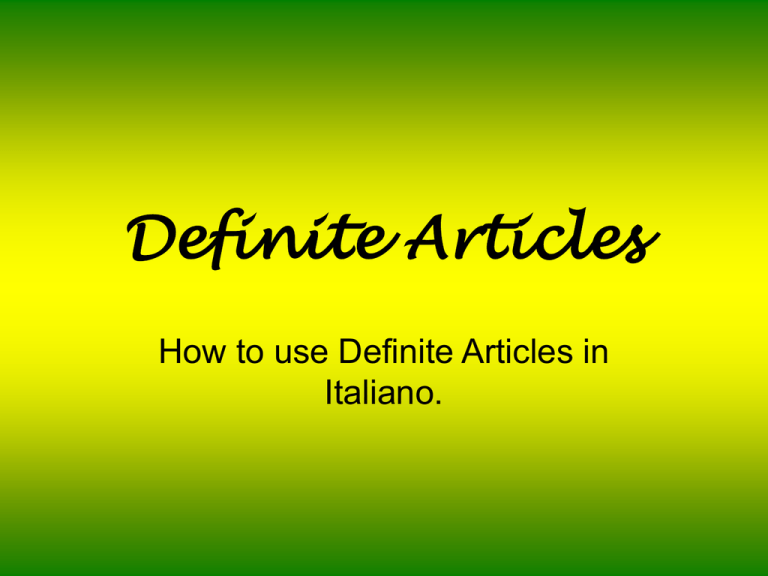
Definite Articles How to use Definite Articles in Italiano. What is a Definite Article? ~A Definite Article is the “the” before a noun. ~ Every noun has a specific definite article. ~Definite articles are decided by the gender and number of the noun. ~Every noun has a gender, masculine and feminine. The best way to decide the gender of a noun is by the last letter or the definite article. o & i = masculine a & e = feminine. List of Definite Articles Singular Masculine il lo l’ Feminine la l’ Plural - i gli gli - le le When do you use each? Masculine Definite Articles (in the singular) il – used with masculine nouns beginning with a consonant. ex – il ragazzo, il professore lo – used with nouns beginning with z, s plus a consonant, ps, or gn. ex – lo studente, lo zero, lo psicologo l’ – is used with nouns, masculine or feminine, beginning with a vowel. ex – l’amico, l’orologio, l’amica, l’università Making Masculine Articles Plural When the noun becomes plural, the article must change as well. il becomes i ex. i ragazzi, I professori lo becomes gli ex. gli studenti, gli zeri l’ (in the masculine) becomes gli ex. gli amici, gli orologi When do you use each? Feminine Definite Articles (in the singular) la – used with the singular feminine nouns ex. La ragazza la scuola la casa l’ – used for both masculine and feminine for any noun starting with a vowel. ex – l’amica, l’isola Making Feminine Articles Plural When making feminine articles plural, it is very simple. Both la and l’ become le when they are pluralized. la becomes le ex. Le ragazze, le scuole l’ becomes le ex. Le amiche, le isole Adesso, è toca voi! Write in the definite article of each word. ____ orologio _____ bandiera ____ studenti _____ professoressa ____ cestino _____ bacheca ____ professore _____ amica ____ ragazzo _____ quaderni ____ banco _____ Signorina ____ libro _____ pianta Gender of Nouns What is a noun? ~ a person, place or thing In Italiano, nouns are either Masculine or Feminine Masculine ~in the singular ends in “o” and becomes an “i” when it is pluralized. Feminine ~in the singular, usually ends in “a” and becomes an “e” when pluralized. *When a noun ends in an “e” in the singular it can be either masculine or feminine, and you need to memorize which ones are which. Esempi dei nomi Examples of Nouns: il ragazzo = the boy ~ i ragazzi = _________ la ragazza = the girl ~ le ragazze = _______ il libro = the book ~ i libri = ____________ la lavagna = the blackboard ~ le lavagne = _______
